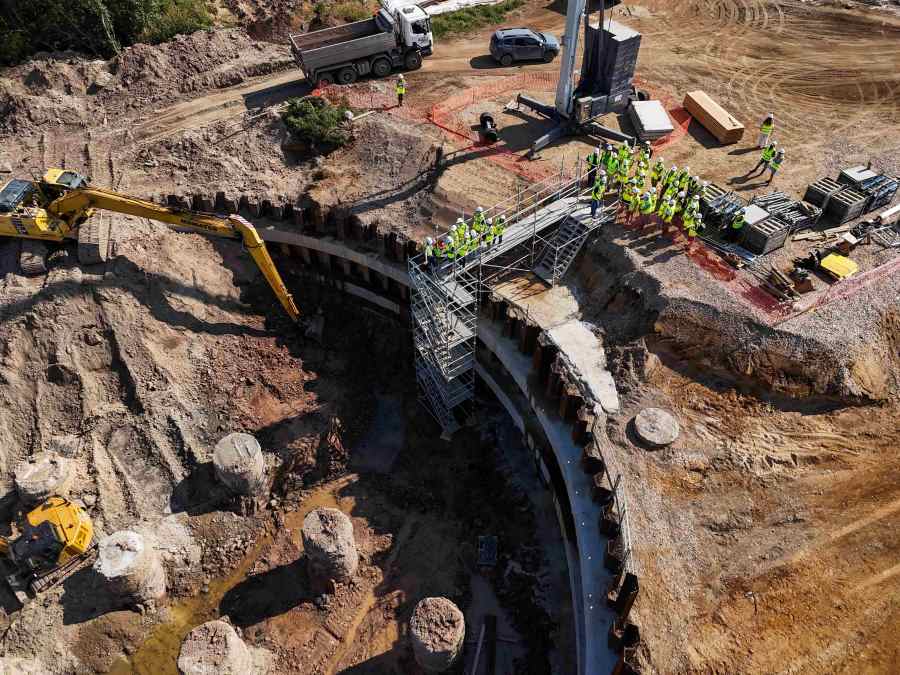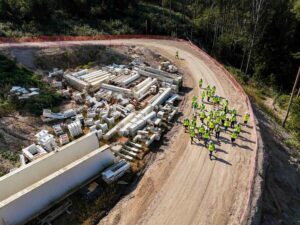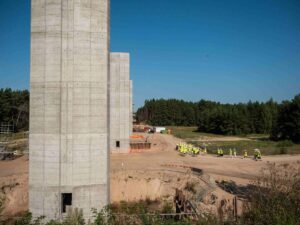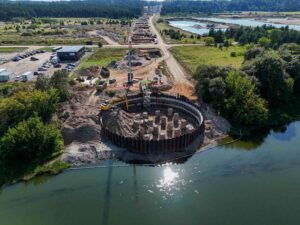For the first time, the public was invited to explore the Rail Baltica Neris Bridge construction site

LTG Group continues its annual tradition of opening railway infrastructure sites that are typically inaccessible to the public. This year, one of the highlights was the construction site of what will become the longest railway bridge in Lithuania – the Rail Baltica bridge over the Neris River. Last weekend, 3 guided groups had the opportunity to visit the site and witness the progress of this strategic infrastructure project up close.
This marked the first public event where complex engineering solutions, cutting-edge construction technologies, and the scale of the Rail Baltica project were presented directly to the public.
“Construction sites are usually closed or even guarded. We are grateful to the contractor Rizzani de Eccher for opening the doors and enabling the public to safely visit one of the most fascinating Rail Baltica structures. We want construction to be visible not only in photos or videos, but for the people to experience the project, its progress, and scale up close. Judging by the visitors’ interest and engagement, this project clearly matters to them as well,” said Egidijus Lazauskas, CEO of LTG Group.
During the visit, guests learned about last year’s major infrastructure tests, including record-setting pile testing, deck construction technologies, the reconstruction of the Litgrid power line, results of the latest environmental studies, and the challenges posed by water management at the site. Additionally, they were introduced to the broader progress of the Rail Baltica project in Lithuania, where 77 km of embankments and engineering structures are currently under construction.
Until September 15, the public is invited to visit other typically closed railway infrastructure sites, including the intermodal terminals in Kaunas and Vilnius, the Radviliškis Railway Node, and the electric train depot in Naujoji Vilnia, among others.
Rail Baltica is a strategic project for both the LTG Group and the European Union and is the largest railway infrastructure project in the history of the Baltic States. Once completed, it will deliver an electrified European standard gauge railway line connecting Lithuania, Latvia, and Estonia with Central and Western Europe, strengthening regional integration, civil and military mobility, and the overall resilience of the transport system.







